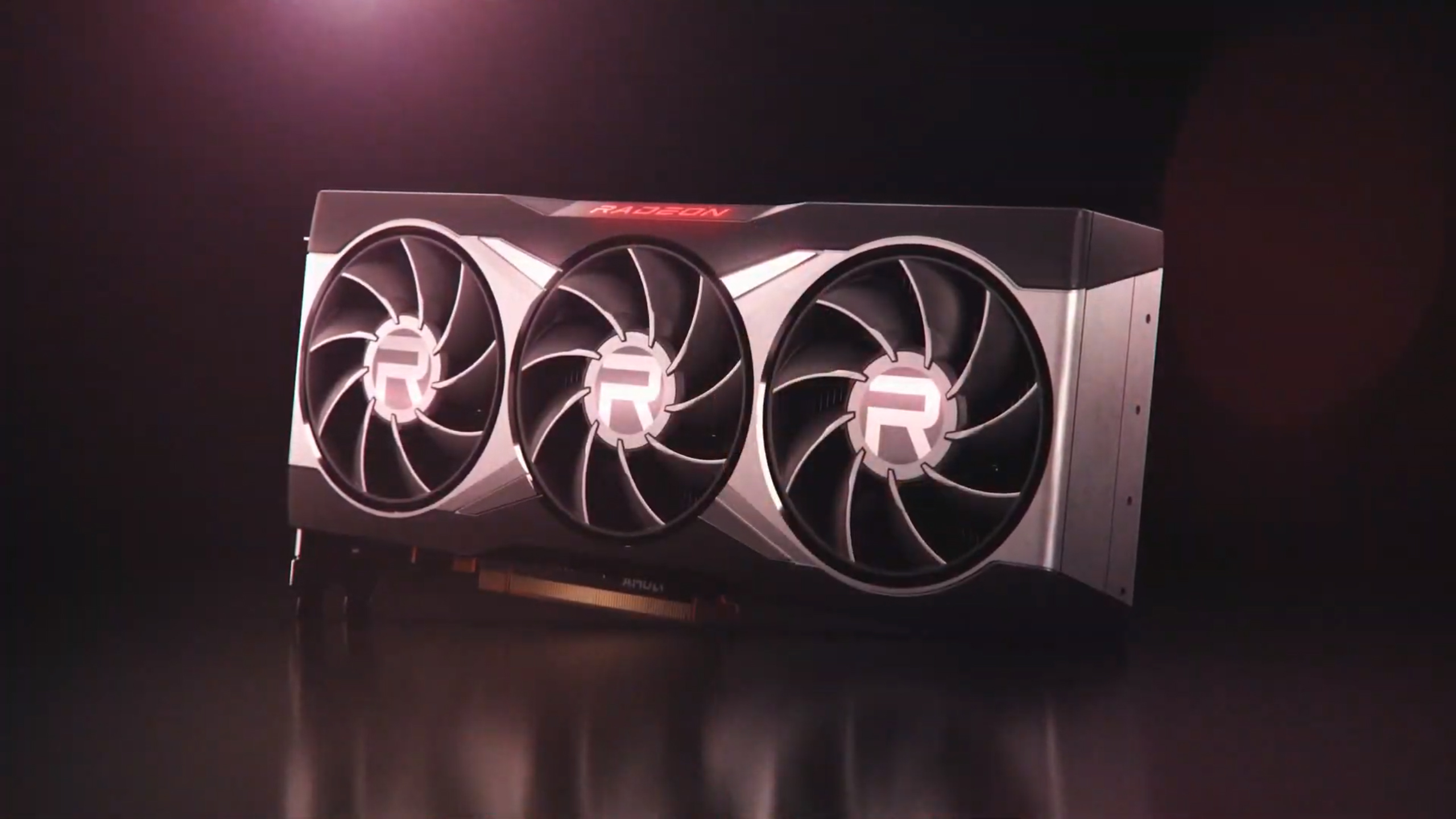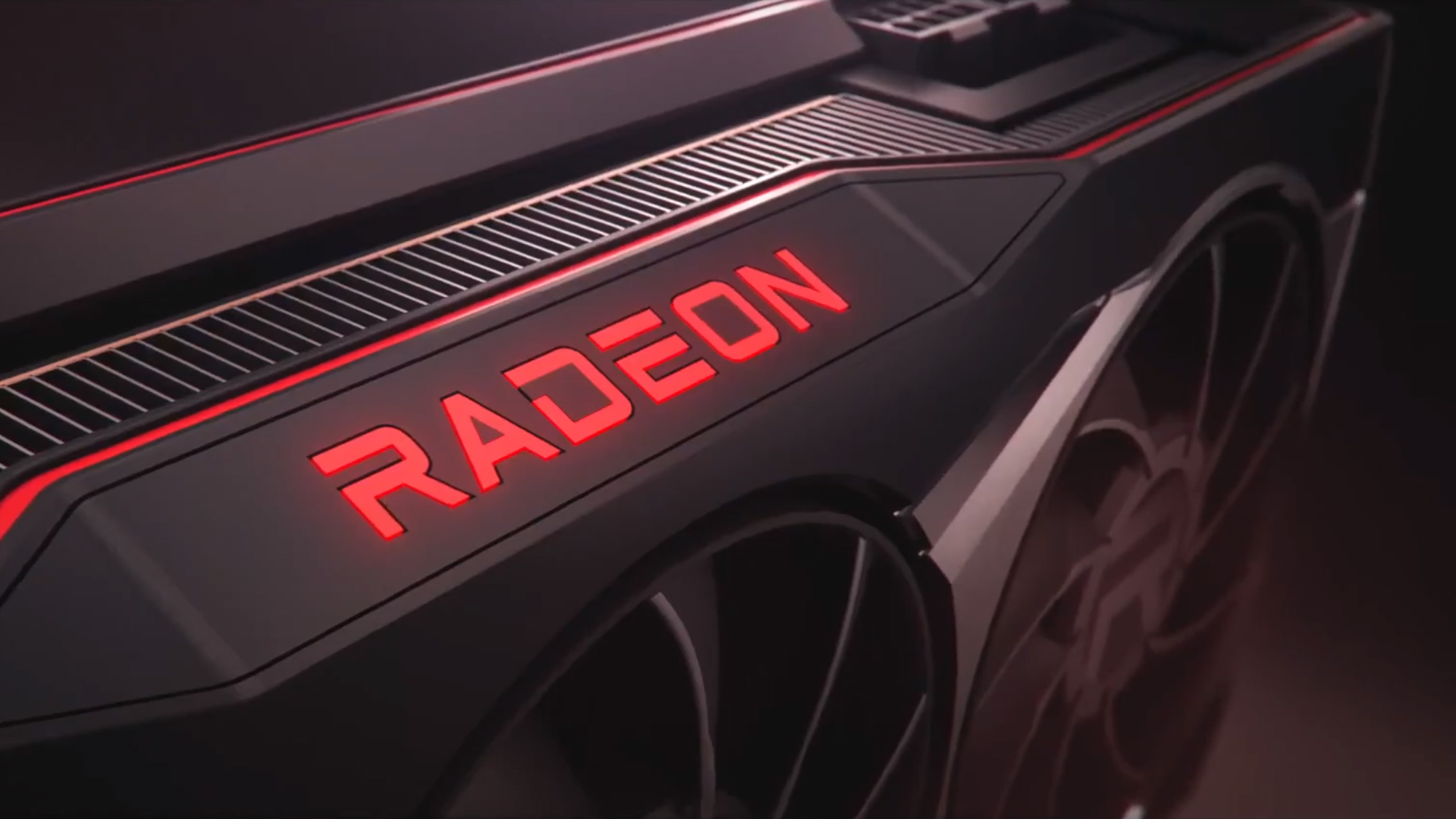AMD Big Navi may not be the Nvidia RTX 3080 killer people hoped for

AMD recently showed off its new Ryzen 5000 processors, which uses the company’s Zen 3 architecture, but it also gave us a sneak peak of its upcoming RDNA 2 graphics card lineup, including the flagship ‘Big Navi’, and it looks to be pretty impressive.
One of the big themes of AMD’s Ryzen 5000 launch was how good these processors are at gaming, and to prove it, AMD showed off benchmark results of its high-end 12-core Ryzen 9 5900X processor paired with an RDNA 2 graphics card.
- These are the best AMD graphics cards
- We pick the best gaming laptops
- What Amazon Prime Day deals can we expect?
While we don’t know which AMD Radeon RX 6000-series graphics card was used in the benchmark tests, we’d imagine it’s the flagship ‘Big Navi’ GPU. Why? Well, first, AMD CEO Lisa Su showed off an RX 6000-series GPU on stage, announcing that “we now affectionately call [it] 'Big Navi' thanks to many of you who nicknamed it for us… It is absolutely gorgeous, and by far the most powerful gaming GPU we have ever built."
So, after namechecking Big Navi, it’d be weird if AMD was using a lesser card. Also, with AMD pairing it with one of its high-end CPUs, it would be odd if the company used a mid-range card, as presumably it would want to show off the very best results.

4K powerhouse
According to the benchmarks AMD showed off, the Radeon RX 6000 series GPU and Ryzen 9 5900X combo look like they can handle some of the most graphically-demanding PC games at their highest graphically settings at 4K (3,840 x 2,160) resolution.
So, Borderlands 3 at its ‘Badass Quality’ hits 61 frames per second (FPS). Call of Duty: Modern Warfare on Ultra Quality hit 88 FPS, and Gears 5 scored 73 FPS on Ultra Quality as well.
If you’re planning on gaming with a 4K monitor or TV then, AMD’s Radeon RX 6000 series GPUs seem like they could be great choices, though we still don’t know exact specs and price details – which are rather important. Hopefully we’ll hear more on October 28, when AMD is hosting another event to show off its GPUs in full.
Sign up for breaking news, reviews, opinion, top tech deals, and more.
Meanwhile, Tom’s Hardware has placed these results against benchmarks taken using Nvidia’s cards to get an idea of how AMD’s GPU compares at 4K. As the website notes, the test rig they used uses an Intel Core i9-9900K processor, so these won’t be quite like-for-like, but the benchmarks are mainly GPU-dependant anyway, so it still gives us an idea.
According to Tom’s Hardware’s tests, the AMD Big Navi card pretty much matches the Nvidia RTX 3080 in Borderlands 3 at 4K using the ‘Badass Quality’ settings. However, perhaps unsurprisingly, it can’t compete with the beastly RTX 3090, which scored a huge 69.1 FPS (versus Big Navi’s 61 FPS).
However, with Gears 5 at 4K, the Big Navi GPU struggles to match the RTX 3080, which scored 79.6FPS compared to the AMD score of 73 FPS. Once again, the RTX 3090 is way out in front with 87FPS.
So, it looks like AMD’s flagship GPU will just about be level with Nvidia’s RTX 3080. Does this mean the dream of AMD having an ‘Nvidia killer’ GPU is over? Not quite, as there’s a few things to keep in mind.
First, as we said earlier, these are not direct comparisons. A more fair test will be trying out all the GPUs using exactly the same test hardware – and that’s something we’ll be doing when we get hold of the AMD Radeon RX 6000 GPUs for review.
Secondly, we don’t know which RX 6000 GPU was used. While it might be AMD’s most powerful GPU, there’s always the chance that AMD is holding back an even more powerful GPU for a surprise showing.
Also, as Dr Su notes, “we still have a few weeks until launch and the team is working really hard on fine tuning things,” which suggests we could see better results with the final product.
Finally, we should also point out that we don’t know anything about the price. If this GPU is significantly cheaper than the RTX 3080, while offering comparable performance, then this could be a big game changer. In the past, AMD hasn’t been shy about undercutting the competition.
Whatever happens, now is an incredibly exciting time to be a PC gamer.
- These are the best GPUs of 2020

Matt is TechRadar's Managing Editor for Core Tech, looking after computing and mobile technology. Having written for a number of publications such as PC Plus, PC Format, T3 and Linux Format, there's no aspect of technology that Matt isn't passionate about, especially computing and PC gaming. He’s personally reviewed and used most of the laptops in our best laptops guide - and since joining TechRadar in 2014, he's reviewed over 250 laptops and computing accessories personally.